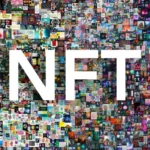Use Blockchain for Secure Data Storage starts with understanding its transformative role in protecting sensitive information.
Blockchain offers a decentralized, tamper-proof system that enhances data integrity and security across industries.
Unlike traditional storage systems, it eliminates single points of failure and ensures data is cryptographically secured and transparently recorded.
As businesses handle increasing volumes of critical data, blockchain provides a reliable solution that safeguards against breaches and unauthorized access.
This technology is reshaping how data is stored, accessed, and verified—making it essential for organizations that prioritize security, compliance, and trust.
In this guide, you’ll learn how to effectively use blockchain for secure data storage and explore the tools, steps, and best practices to implement it successfully.
What Is Blockchain Technology?
Blockchain is a distributed ledger technology (DLT) that records data across multiple systems in a decentralized and immutable manner.
Each entry is stored in a block, linked to previous blocks, forming a chain of data that is nearly impossible to alter retroactively.
Key Features of Blockchain:
- Decentralization: No central authority controls the data.
- Immutability: Once recorded, data cannot be altered without consensus.
- Transparency: All changes are recorded and verifiable.
- Security: Advanced cryptography protects the data.
Why Use Blockchain for Data Storage?
Data is one of the most valuable assets today, and securing it is vital for businesses, governments, and individuals. Blockchain enhances data storage by offering the following advantages:
| Benefit | Description |
|---|---|
| Decentralized Control | Eliminates a single point of failure. |
| Enhanced Security | Data is encrypted and verified by consensus. |
| Tamper-Resistance | Data cannot be modified without detection. |
| Reduced Costs | Peer-to-peer networks reduce intermediary costs. |
| Transparency | All actions on the data are traceable. |
How Blockchain Enhances Data Security

Blockchain achieves robust security through a combination of cryptographic methods, consensus algorithms, and decentralized validation.
Encryption
Each block in a blockchain is encrypted using algorithms like SHA-256, which ensures data integrity and security.
Consensus Mechanisms
Mechanisms like Proof of Work (PoW) or Proof of Stake (PoS) validate data entries, preventing unauthorized changes.
Redundancy
Data is duplicated across multiple nodes, ensuring it is safe even if some nodes fail.
Smart Contracts
These are self-executing contracts with the terms directly written into code. They add a layer of security and automation.
ALSO READ: How to Understand What NFTs Really Are?
Types of Blockchain-Based Storage Systems
There are several approaches to storing data using blockchain:
| Type | Description | Example |
|---|---|---|
| On-Chain Storage | Data is stored directly on the blockchain. | Small documents, contracts |
| Off-Chain Storage | Blockchain holds the reference; data is stored elsewhere. | IPFS with Ethereum |
| Hybrid Storage | Combines on-chain verification with off-chain data. | Medical records, IoT logs |
Step-by-Step Guide to Implement Blockchain for Data Storage
Step 1: Define Your Storage Requirements
Identify what type of data you want to store and why blockchain is necessary.
Step 2: Choose a Blockchain Platform
Select a platform based on your needs:
- Ethereum: Smart contracts and dApps
- Hyperledger Fabric: Permissioned networks
- Filecoin/IPFS: Decentralized file storage
Step 3: Design the Architecture
Decide between on-chain or off-chain storage, access protocols, and data distribution methods.
Step 4: Integrate Encryption & Access Control
Use public-private key encryption to secure access.
Step 5: Develop Smart Contracts
Use smart contracts for automation and permissions.
Step 6: Test the System
Conduct thorough testing to identify any vulnerabilities.
Step 7: Launch and Monitor
Deploy and continuously monitor performance and security.
Key Use Cases of Blockchain for Data Storage

Healthcare
Medical records require secure, immutable, and traceable storage. Blockchain ensures that only authorized personnel can access data.
Finance
Banks use blockchain for storing transaction records, reducing fraud and ensuring transparency.
Legal Industry
Storing contracts and legal documents on blockchain prevents tampering and simplifies auditing.
Supply Chain Management
Blockchain offers traceability and transparency for logistics and shipping records.
Government and Public Records
Land titles, birth certificates, and voting data can be securely stored and verified.
ALSO READ: How to Get Started with Crypto Coins: A Beginner’s Guide to Digital Currency
Challenges of Blockchain-Based Storage
Despite its advantages, blockchain is not without challenges.
| Challenge | Description |
|---|---|
| Scalability | Blockchains can become slow with high transaction volumes. |
| Storage Cost | On-chain data storage is expensive. |
| Regulatory Issues | Data sovereignty laws vary across regions. |
| Energy Consumption | Some consensus mechanisms consume high energy (e.g., PoW). |
| User Education | Requires awareness and understanding for implementation. |
Best Practices for Using Blockchain for Secure Storage
- Use Hybrid Storage Models: Combine the strengths of on-chain verification with scalable off-chain storage.
- Choose the Right Blockchain: Match the use case with the blockchain platform.
- Encrypt Data Before Storing: Always use robust encryption protocols.
- Regularly Audit Smart Contracts: Prevent vulnerabilities with regular security audits.
- Implement Multi-Factor Authentication: Enhance access security with MFA.
Comparison Table: Blockchain vs. Traditional Data Storage
| Feature | Blockchain Storage | Traditional Storage |
|---|---|---|
| Security | High (encrypted, decentralized) | Medium (centralized, more vulnerable) |
| Cost | Varies (on-chain is expensive) | Lower for simple needs |
| Transparency | Fully transparent with audit trail | Limited visibility |
| Control | Distributed | Centralized |
| Scalability | Limited for on-chain | Highly scalable |
| Tamper Resistance | Very high | Moderate |
Future Trends in Blockchain Data Storage

As blockchain technology matures, several trends are shaping its future:
Integration with AI and IoT
AI algorithms require secure, traceable data sources. Blockchain provides a perfect match, especially for IoT device logs and real-time data.
Zero-Knowledge Proofs (ZKP)
These allow verification of data without revealing the data itself — a significant advancement for privacy.
Tokenized Data Ownership
Users can own and monetize their data using NFTs or tokenization, changing how data rights are handled.
Interoperability Protocols
Cross-chain compatibility and communication will enable more robust storage solutions across multiple blockchains.
Green Blockchain Solutions
Energy-efficient consensus methods like Proof of Stake and Proof of History are gaining ground to reduce blockchain’s carbon footprint.
ALSO READ: How to Start a Blockchain-Based Business?
Conclusion
Using blockchain for secure data storage is no longer a futuristic concept — it’s a practical solution for industries requiring high-level data integrity, transparency, and security.
While there are challenges such as cost and scalability, the benefits far outweigh the drawbacks when implemented thoughtfully.
Whether you’re a startup handling sensitive customer data or an enterprise looking to build trust through transparency, integrating blockchain can offer unparalleled advantages.
By understanding the fundamentals, choosing the right storage model, and following best practices, you can future-proof your data infrastructure.







